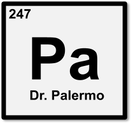Chemistry hack #4 defrosting your windshield
With the onset of winter and very cold mornings, I don’t care to wait while my car warms up so I can defrost my windshield and I hate scraping off the ice. Take a spray bottle and mix about 1/3 cold water and 2/3 rubbing alcohol. Simply spray it on your windshield and within moments it will remove the ice and you will be on your way. If your fire locks are frozen you can spray it on there as well. This works because of the low freezing point of isopropyl alcohol which causes the ice to melt. We will be learning about this in more detail in class after the new year.

 RSS Feed
RSS Feed




